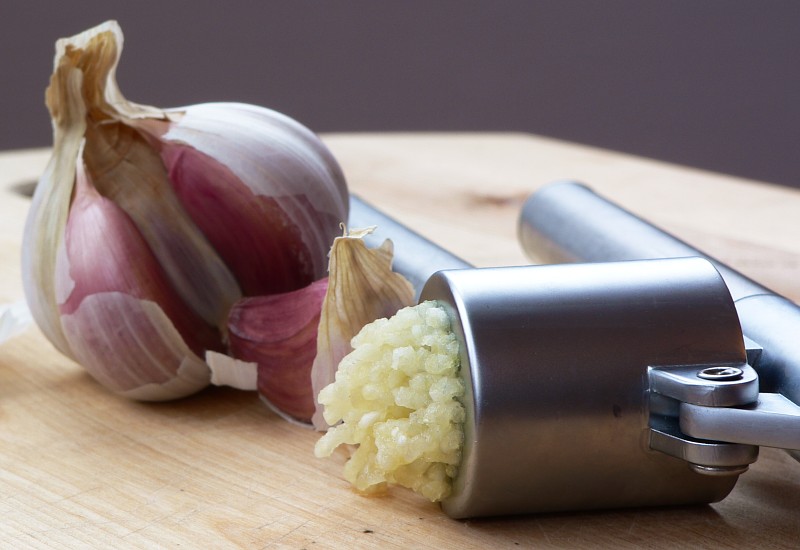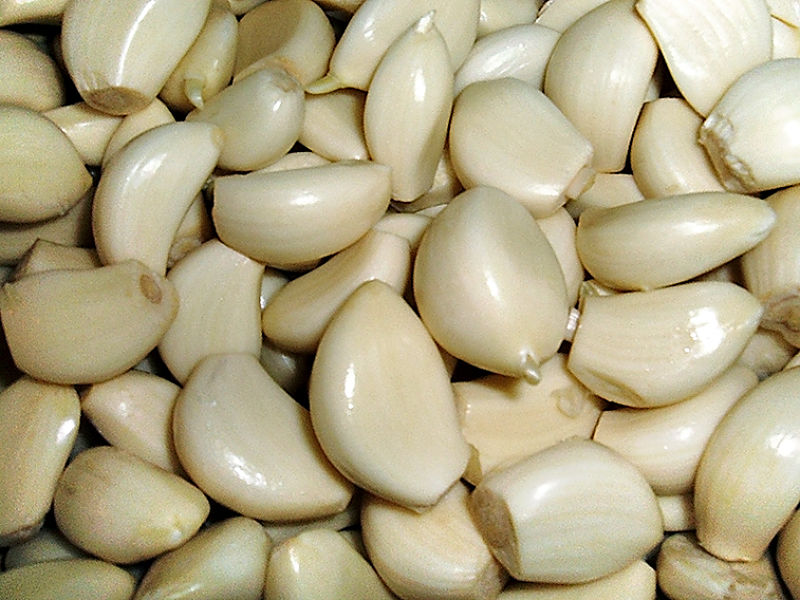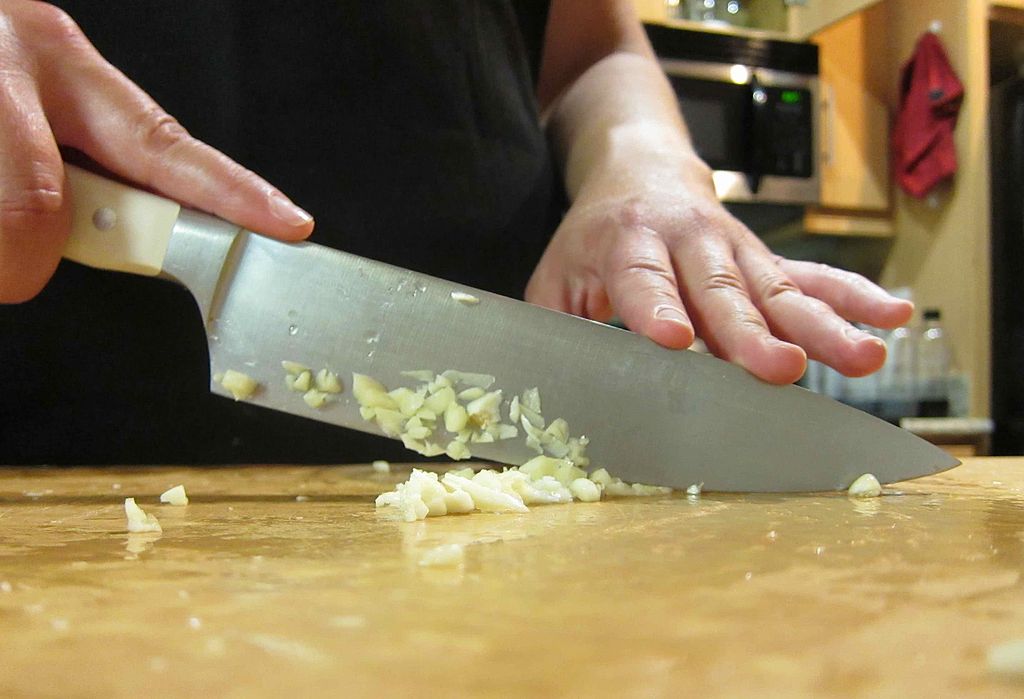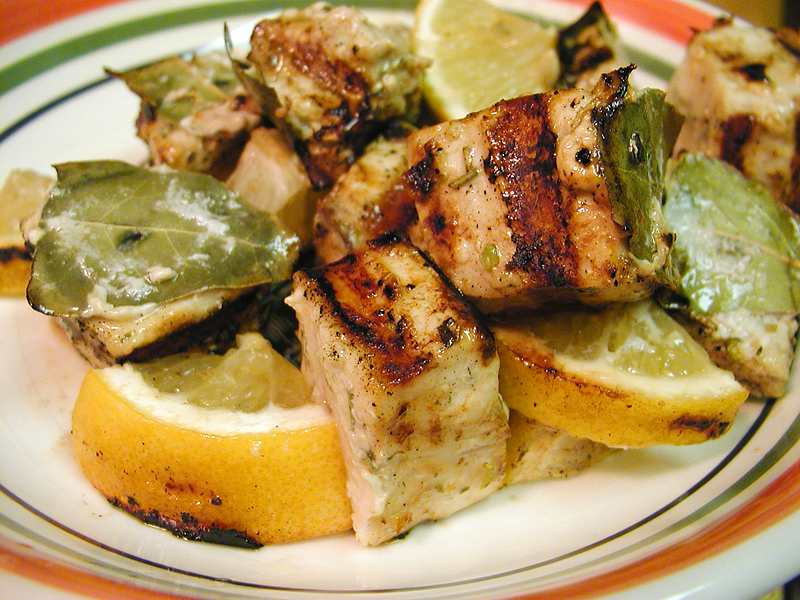How to Prepare Garlic - Cooking Tips, Hints and Tricks for Fresh Garlic
Garlic is widely used, but it can be hard to prepare, slice, chop, crush and cook simply and easily and in a way that retains its full flavor and health benefits.
It is very easy to burn garlic or to mash it into a fine pulp that has no flavor and is impossible to fry. Do it the wrong way and the dish can be ruined.
This article is a treasure trove of tip, hints, tricks for preparing, slicing, chopping and using fresh garlic in a variety of dishes.
Scroll through the list to find the hint you are searching for. Add additional hints in the comments if something has been missed.
Learn how to grow Garlic in your own garden & when to plant it in your Climate Zone.
Tips and Tricks for Preparing and Cooking Garlic
Storing Garlic
The best way to store garlic is as whole bulbs. The best place to store garlic is a dry, dark and warmish environment. Bulbs can be gathered together and hung in a convenient place in the kitchen. Don't put dry garlic bulbs in the fridge as it is too cold and damp and the garlic will deteriorate or start to shoot. Peeled garlic cloves can be easily frozen.
Peeling Garlic Cloves
The simple way to make peeling garlic cloves easier is to press down hard on each one using the flat of a large knife or a Chinese style chopper, until the clove 'cracks'. Then, slice off the top and most of the skin will come away very easily. You can also crush garlic in a heavy garlic press with the skin on, or with 'cracked bulbs. The skin won't pass through the holes in the press.
A quick way to peel cloves is using the neat little rubber peeling tubes that have become popular recently. Putting garlic cloves in the microwave for 15 seconds will also help the skins slip off easily. Also warming the cloves before peeling helps as well.
Crushing Garlic
Garlic can easily crushed with a garlic press or a pestle and mortar. But make sure this is what you really want to do with the garlic. Larger pieces tend to retain the taste of the garlic itself. Crushed garlic is really designed for dishes that require the garlic taste to be infused and combined with other ingredients. On the other hand, crushing garlic releases all the wonderful array of nutrients in the garlic.
Chopping and Slicing Garlic
Chopping garlic allows the garlic to be cooked very quickly and combined with other ingredients. The flavor tends to be less intense than crushed garlic, unless the pieces are quite large. Sliced garlic can create a wonderful visual effect. Lightly salting the garlic can also enhance its flavor. But be very careful when cooking chopped and thin slices of garlic as it is very easy to burn the garlic. One of the problems is that all the pieces have different sizes, and the smaller ones will cook much quicker and burn quicker than the larger pieces. A few burnt morsels can ruin the batch of cooked garlic. So you need to take extra care when frying chopped and sliced garlic.
Tips for Cooking and Roasting Whole Garlic
When whole cloves of garlic are cooked, either peeled or unpeeled, no chemical reactions occur that create the allicin and other sulphur compounds that are typical of cooked crushed garlic. So the flavor of the garlic will be much milder, but you will get the full dose of taste when you bit into the roasted cloves. Roasting garlic whole with the skins intact creates a fabulous sweet, mild, and slightly caramelised garlic taste.
An easy rule of thumb for garlic is the smaller it is cut, the stronger the flavor and the less time that is required to cook it.
Chopping garlic finely, crushing and pressing garlic exposes more surfaces to the air. This allows more of the chemical reactions that generate the strong aroma and potent flavor of garlic.
Frying or Sautéing Garlic
Sautéing is the most frequent method used for cooking garlic. This brings out the nutty and savory flavor of the garlic. Timing is critical to avoid burning the garlic. There is a temptation to add the garlic to a hot pan before adding the onions. This is a big mistake because garlic takes seconds to cook, while the onions may take a minute or more. It is better to add the garlic to the pan after the onions have almost been fully cooked. The same applies to other ingredients. This also applies to fish and meat. the garlic should be added last not first.
Nutrition Data for Fresh Garlic (100g)
|
Fresh garlic serving size 100g
|
Nutrient Value
|
|---|---|
|
Energy
|
149 Kcal
|
|
Carbohydrates
|
33.06 g
|
|
Protein
|
6.36 g
|
|
Total Fat
|
0.5 g
|
|
Cholesterol
|
0 mg
|
|
Dietary Fiber
|
2.1 g
|
|
Vitamins
|
|
|
Folates
|
3 mcg
|
|
Niacin
|
0.70mg
|
|
Pantothenic acid
|
0.596 mg
|
|
Pyridoxine
|
1.24 mg
|
|
Riboflavin
|
0.11mg
|
|
Thiamin
|
0.20 mg
|
|
Vitamin A
|
9 IU
|
|
Vitamin C
|
31.2 mg
|
|
Vitamin E
|
0.08 mg
|
|
Vitamin K
|
1.7 mcg
|
|
Electrolytes
|
|
|
Sodium
|
153 mg
|
|
Potassium
|
401 mg
|
|
Minerals
|
|
|
Calcium
|
181 mg
|
|
Copper
|
0.3 mg
|
|
Iron
|
1.70 mg
|
|
Magnesium
|
25 mg
|
|
Manganese
|
1.67 mg
|
|
Phosphorus
|
153 mg
|
|
Selenium
|
14.2 mcg
|
|
Zinc
|
1.16 mg
|
|
Phyto-nutrients
|
|
|
Carotene-alpha
|
5 mcg
|
|
Crypto-xanthin-beta
|
0 mcg
|
|
Lutein-zeaxanthin
|
16 mcg
|



